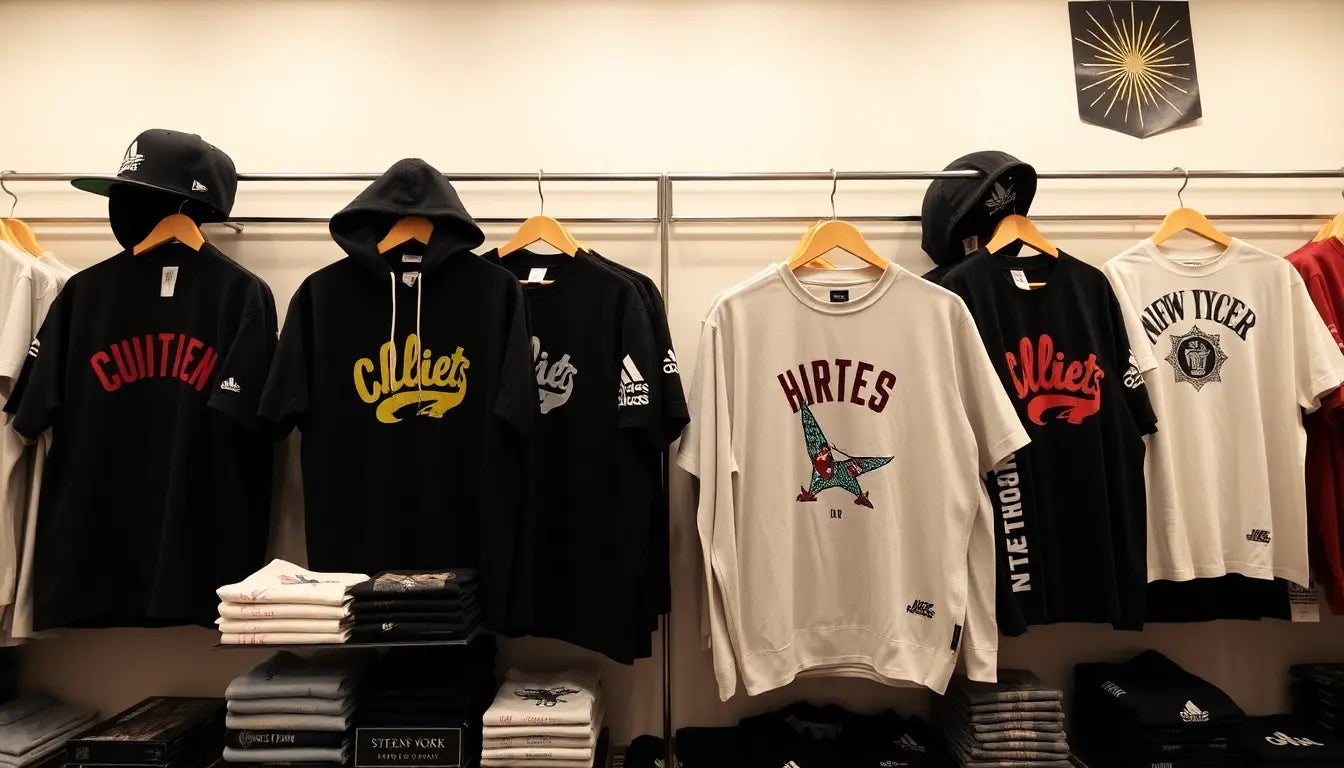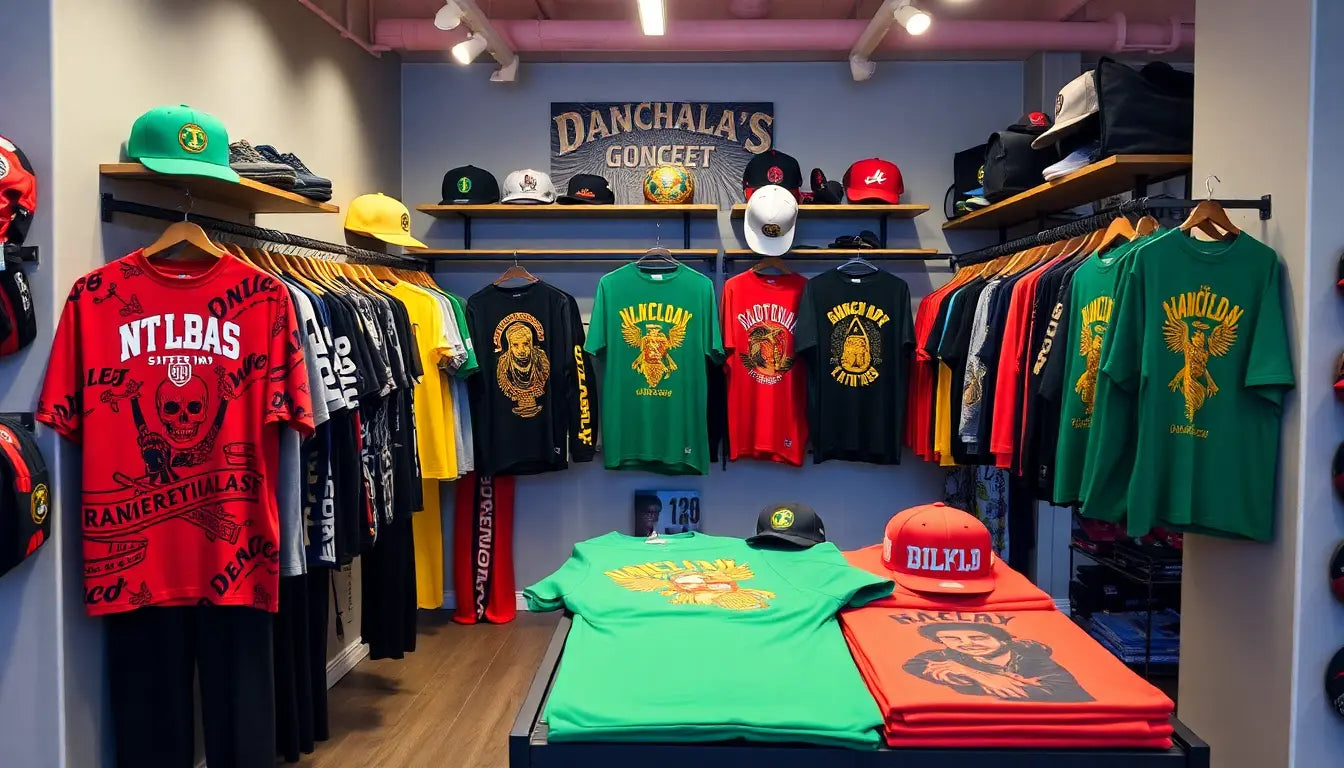
From Merch Table to Retail Shelf: How Tommy Lee Sparta Scaled Dancehall Streetwear with Strategic Wholesale and Retail Partnerships
Introduction
Turning artist merch into a sustainable retail brand is one of the most powerful ways musicians can monetize cultural influence. Tommy Lee Sparta is a compelling example of how an artist-rooted brand can graduate from concert T-shirt sales to being stocked on retail shelves through strategic wholesale and retail partnerships. This expanded guide examines tactics, operational systems, legal guardrails, marketing strategies, and step-by-step playbooks you can follow to replicate that success.
Why the Shift from Merch Table to Retail Shelf Matters
- Revenue diversification. Retail partners smooth revenue by buying in bulk and creating repeat purchase cycles.
- Brand amplification. Retail presence introduces the brand to customers who never attended a show.
- Perceived value. Being stocked by reputable boutiques or chains confers cultural and commercial legitimacy.
- Operational discipline. Retail-ready requirements force brands to mature product, forecasting, and supply chain practices.
Brand Foundations: How Tommy Lee Sparta Built Cultural Authenticity
Authenticity is the foundation. Tommy Lee Sparta leveraged music, visuals, and community to create garments that felt like a lived identity. Key brand foundations to emulate:
- Consistent visual language across music videos, social, and packaging.
- Story-driven products with references fans understand.
- Limited runs and drops to cultivate scarcity and hype.
- Artist involvement in design direction to ensure credibility.
Product Strategy: Designing Retail-Ready Collections
Design with retail in mind without losing street credibility. Practical product guidelines:
- Three-tier assortment: basics for mass appeal, seasonal capsule pieces, and occasional premium collaborations.
- Use tech packs for every style: clear spec sheets reduce miscommunication with factories.
- Graded sizing and fit blocks so retailers can reliably stock sizes for different markets.
- Material choices that balance cost, durability, and perceived value.
- Packaging that reads retail: hang tags, labels, and simple recyclable polybags.
Tech Pack and Line Sheet Essentials
Two documents significantly improve the wholesale pitch: tech packs and line sheets. What to include.
- Tech pack items: front and back flats, measurements, materials, trim and label specs, wash instructions, grading rules, and acceptable tolerances.
- Line sheet items: SKU code, product name, wholesale price, suggested retail price, MOQ, available colors and sizes, lead time, and one clear photo per SKU on model and flat.
Sample Line Sheet Structure
- Header with brand logo and contact info.
- Season or drop title with a short brand statement.
- Product rows: SKU, name, wholesale price, MSRP, MOQ, lead time, colorway.
- Ordering and payment terms summarized at the bottom.
Costing and Pricing Framework
Know your numbers. A basic costing process ensures sustainable margins when selling wholesale.
- Cost of goods sold per unit: materials, labor, trims, packaging.
- Landed cost: COGS plus shipping, duties, insurance, and fulfillment costs.
- Wholesale price: landed cost multiplied by markup factor to preserve gross margin.
- MSRP guidance: commonly 2x retail keystone of wholesale price but can vary by category.
Example calculator logic using simple math: if landed cost is 10, target gross margin at wholesale is 50 percent, set wholesale price to 20; recommended MSRP becomes 40. Adjust for category norms and retailer expectations.
Manufacturing and Supply Chain: Scaling Production Without Sacrificing Quality
Scaling production is one of the hardest parts of the transition. Practical steps to manage this well:
- Factory vetting: request references, run trial samples, and visit in-person or hire third-party inspectors.
- MOQs and flexibility: negotiate pilot MOQs for new retailers and staggered shipments to reduce inventory risk.
- Quality control: create a QC checklist for pre-shipment inspections and maintain a returns and defect policy for retailers.
- Lead time planning: build buffer time for unexpected delays and communicate lead times transparently to retail partners.
Wholesale Pricing Structures and Payment Terms
Wholesale agreements often use a combination of payment terms and discount tiers. Standard structures include:
- Net 30 or Net 60 payments for established retailers with credit checks.
- Deposit plus balance on shipment for new partners, commonly 50 percent upfront.
- Tiered pricing for volume: higher discounts for larger orders to incentivize reorder.
- Seasonal returns policy or consignment options for highly curated boutiques.
Outreach and Sales: How to Pitch Retailers
Effective outreach combines data and storytelling. Tips for a high-converting pitch:
- Lead with proof: mention sell-outs, waitlists, or social traction numbers.
- Customize the pitch: show why the collection fits that retailer's customer base.
- Include a clear ask: sample order expectation, MOQ pilot, or in-store pop-up proposal.
- Follow up with a concise PDF lookbook and a line sheet link or attachment.
Sample Outreach Email Template
Use this structure and adapt it to your voice. Keep it concise and actionable.
- Subject line: new dancehall streetwear drop from a proven artist with strong sell-through data
- Opening: quick intro and reason for outreach.
- Proof: one-sentence proof point like sold-out runs, social engagement, or prior retailer success.
- Ask: request a meeting or offer a pilot MOQ with terms.
- Close: link to line sheet and contact info.
Retailer Types and Tailored Strategies
Different retailers require different approaches. Here are targeted strategies by retailer type.
- Boutiques: emphasize exclusivity, limited capsule drops, and artist appearances.
- Regional chains: offer regionalized marketing support and predictable replenishment plans.
- Online marketplaces: ensure photography, product descriptions, and size charts are tight to minimize returns.
- Department stores: demonstrate demand signals, consistent supply, and a clear brand story for broader audiences.
Retail Activations That Drive Sell-Through
In-store activations convert visibility into sales. High-impact activation ideas:
- Artist signings and acoustic sets timed with a product drop.
- Limited-edition in-store exclusives and co-branded installations.
- Window styling and POS displays that tell the brand story.
- Local influencer meet-and-greets or micro-events promoted by the retailer.
Marketing and PR Playbook to Support Retail Growth
Marketing must be synchronized with retail timelines. Core elements of an omnichannel plan:
- Content calendar mapped to wholesale shipping dates and retail launches.
- Co-op marketing budgets for top retail partners and co-branded campaigns.
- Paid media bursts timed to drops: geo-targeted social ads and programmatic campaigns that drive store traffic.
- PR outreach to fashion and music press for capsule drops and retail rollouts.
Influencer and Community Strategy
Authentic influencer partnerships are more effective than one-off sponsorships. A durable strategy includes:
- Long-term brand ambassadors from relevant subcultures who genuinely connect with the music and style.
- Micro-influencer seeding in local retail markets to build grassroots demand.
- Content partnerships with stylists and streetwear editors to place looks in editorial and social feeds.
Retail Operations and Inventory Management
Good retail partnerships require disciplined operational practices:
- SKU rationalization to avoid over-complex assortments in small retail accounts.
- Reorder triggers, safety stock levels, and replenishment cadence for chain accounts.
- Inventory tracking tools or simple integrations with partner portals for visibility.
- Returns and claim handling policies so partners know how defects are resolved.
Logistics, Duties, and International Expansion
Expanding beyond domestic retail requires planning for customs, taxes, and labeling.
- HS codes and product declarations: assign correct codes to avoid delays.
- VAT, GST, and import duties: price wholesale orders to account for duties when delivering landed cost responsibility is yours.
- Regional warehousing and distribution: consider 3PLs for faster delivery and localized returns.
- Localization: sizing norms, language on hang tags, and seasonal timing differences across hemispheres.
Legal Considerations and IP Protection
Protect your brand and relationships with clear legal frameworks.
- Trademark registration for logos and key marks in priority markets.
- Licensing agreements when third parties produce or co-brand products.
- Wholesale terms and conditions: payment terms, return policy, exclusivity clauses, and termination conditions.
- Artist rights and revenue splits for collaborations and co-branded items.
Retail Agreement Negotiation Points
Typical negotiation topics with retailer buyers include:
- Pricing and minimums: pilot MOQ vs. standard MOQ.
- Payment terms and credit underwriting for bigger chains.
- Marketing support commitments and co-op funds.
- Return windows, defect allowances, and markdown protections.
- Exclusivity windows or geo-restrictions for limited drops.
Data, Analytics, and KPIs to Monitor
Use data to iterate your wholesale strategy. Key metrics include:
- Sell-through rate by SKU and by store.
- Reorder rate and average reorder size.
- Gross margin by channel and landed margin after duties and shipping.
- Days inventory outstanding and rate of markdowns.
- Retail conversion lift during activations and marketing campaigns.
Sample KPI Dashboard Setup
- Topline: total wholesale revenue by month and channel.
- Inventory: current on-hand value and percentage allocated to retail partners.
- Performance: top-performing SKUs, low-performing SKUs, and stores with highest sell-through.
- Marketing ROI: store-level sales lift versus marketing spend.
Case Studies and Tactical Wins
Examine specific tactics that create measurable outcomes:
- Limited capsule collaboration with a high-profile boutique that sold out in 48 hours and generated press — useful to prove sell-through to larger buyers.
- In-store artist appearance that increased foot traffic and store conversion for an entire weekend.
- Regional micro-influencer seeding that improved a retailer reorder rate by 30 percent within a single quarter.
Risk Management and Contingency Planning
Prepare for supply shocks and PR volatility.
- Supplier redundancy: have backup factories qualified for core SKUs.
- Inventory buffers for core best-sellers and conservative forecasting for new SKUs.
- PR playbook for controversies or product issues including holding statements and escalation paths.
- Insurance coverage for transit, property, and product liability.
Sustainability and Social Responsibility
Retail partners increasingly care about ethical sourcing. Steps to align and communicate impact:
- Document factory labor standards, certifications, or audits.
- Consider sustainable materials for premium lines and highlight circularity or recyclability in product copy.
- Transparency: add a sustainability page for wholesale buyers explaining initiatives and certificates.
12-Month Roadmap: From Merch Table to Retail Presence
A practical roadmap to operationalize growth over a year.
- Months 1–3: finalize product offerings, create tech packs, run pre-orders, and build line sheet and lookbook.
- Months 4–6: pilot with 5–10 boutiques, collect sell-through data, refine manufacturing and QC.
- Months 7–9: expand to regional chains and set up basic B2B ordering portal or EDI integration.
- Months 10–12: target national retailers, secure regional distribution partners, and scale marketing co-op programs.
Detailed 90-Day Tactical Sprint
If you want a condensed, detailed sprint to get immediate momentum:
- Day 1–10: finalize three best-selling SKUs and create tech packs and a professional line sheet.
- Day 11–30: run a direct-to-fan pre-order campaign to validate price points and collect demand data.
- Day 31–60: pitch 10 boutique buyers with samples and offer pilot MOQs and exclusive window timing.
- Day 61–90: close 3–5 wholesale partnerships, fulfill pilot orders, execute first retail activations, and measure sell-through.
Store Pitch Deck Outline
Prepare a compact deck to present to buyers. Suggested slide order and content:
- Title and brand statement with hero visual.
- Proof of demand: sell-outs, pre-orders, social metrics.
- Product offering: key SKUs, wholesale and MSRP, MOQ, and lead times.
- Operations: manufacturing partners, QC processes, and logistics.
- Marketing plan: co-op ideas, influencer support, and retail activation calendar.
- Terms and next steps with contact info.
Sample Retail Terms Summary for Contracts
- Payment: 50 percent deposit at order, 50 percent prior to shipment for first-time buyers, Net 30 after credit approval for recurring buyers.
- Returns: defective goods replaced within 30 days; non-defective returns accepted within 14 days at seller discretion or on consignment only.
- Exclusivity: optional short-term exclusivity windows for limited capsule drops with defined geography and SKU coverage.
- Markdowns: agree on maximum permitted markdowns and any compensation for deep clearance events.
Common Challenges and How to Solve Them
- Challenge: Retailers slow to reorder. Solution: build data-driven reorder triggers and offer automatic replenishment with discounts for predictable cadence.
- Challenge: High return rates online. Solution: better size guides, improved product photography, and clear fit messaging.
- Challenge: Manufacturing delays. Solution: multi-sourcing and communicate realistic lead times with contingency plans.
Frequently Asked Questions
- How many SKUs should I start with for wholesale? Start with a tight assortment of 6–12 SKUs focused on best-sellers and core colorways to keep inventory manageable.
- Should I wholesale on consignment or buyout basis? Pilot with consignment for new boutique relationships and shift to buyout for reliable partners with strong sell-through.
- When is the right time to approach big-box retailers? After repeated sell-through successes in boutiques and regional chains and once supply chain reliability is proven.
- How to price for international retailers? Calculate landed cost to destination and set wholesale price that preserves margin after duties and VAT.
Measuring Long-Term Success
Beyond initial sell-through, long-term indicators your retail strategy is working:
- Consistent reorder cadence across seasons and channels.
- Improved gross margins through scale and better supplier terms.
- Brand recognition growth in new markets measured by organic social mentions and press placements.
- Expansion of retail footprint across targeted metropolitan areas and online marketplaces.
Conclusion and Next Steps
Tommy Lee Sparta’s movement from merch tables to retail shelves shows the power of combining cultural authenticity with retail discipline. For artists and founders, the transition requires investment in product quality, reliable supply chains, and retail-ready processes, paired with targeted retail outreach and marketing support. Use the practical templates and roadmaps in this article to build momentum: validate demand, secure meaningful wholesale partners, and scale operations that protect brand integrity while unlocking sustainable growth.
Suggested SEO Keywords and Content Topics
- Tommy Lee Sparta merch
- dancehall streetwear wholesale
- artist streetwear retail partnerships
- how to sell merch to retailers
- line sheet template for wholesale
- streetwear manufacturing checklist
Call to Action
If you are an artist or brand ready to scale from merch table to multi-channel retail, start by finalizing three retail-ready SKUs and preparing a line sheet. Use a 90-day sprint to pilot with boutiques, collect sell-through data, and iterate. For bespoke help building line sheets, tech packs, or a retailer pitch deck, consider partnering with an experienced production and wholesale consultant who understands both fashion operations and music-driven marketing.
Final Notes
Retail success takes time and iteration. The path from street credibility to retail shelves is achievable with deliberate product design, measured operational investments, and relationship-driven wholesale sales. Keep the culture at the heart of your brand, but adopt the systems retailers require. That combination is how artist-led streetwear, like Tommy Lee Sparta's, becomes a durable retail business.



